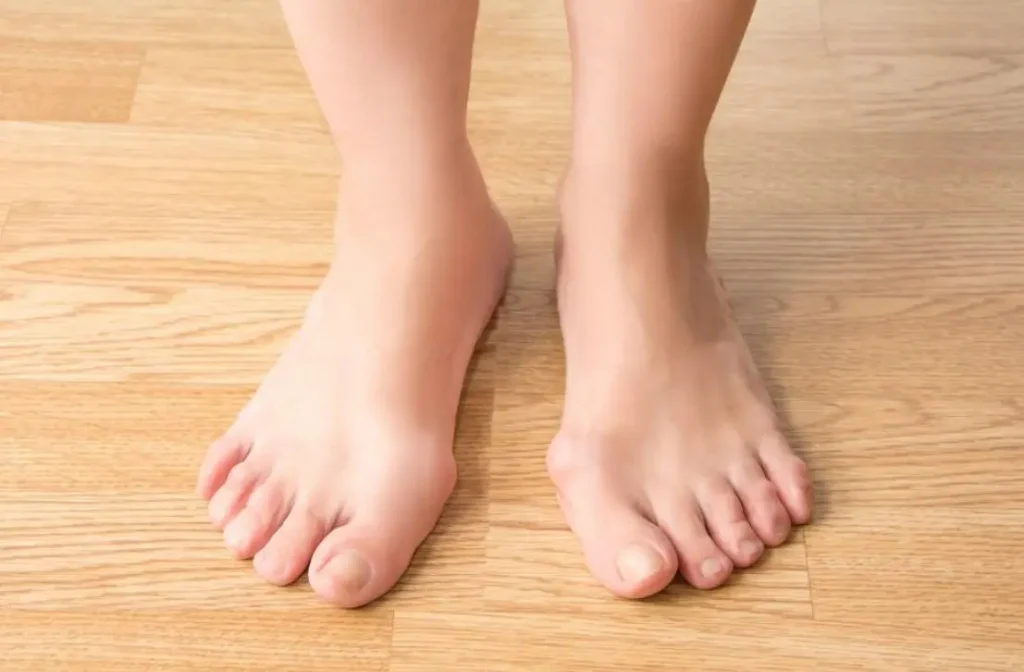A bunion is a bump that forms on the side of the big toe joint, often causing pain and difficulty when walking. For many years, surgeons used metal screws or plates to hold the bones in place after correcting the deformity. While effective, these metal implants sometimes led to discomfort or required removal later on. Now, newer bio-integrative materials offer a gentler path to healing by working with the body instead of against it. This article explains how these materials help bunions heal in a more natural way.
Why Traditional Bunion Surgery Used Metal Implants
In the past, bunion surgery relied on metal pins, screws, or plates to keep the straightened bones aligned. This form of bunion treatment often meant a solid and unyielding fix. Yet metal can cause issues over time. Some patients developed allergic reactions, irritation under the skin, or felt a constant awareness of the hardware. Others returned for a second surgery to remove the metal once the bone had healed. These extra steps added cost, risk, and stress to the recovery process.
What Are Bio-Integrative Materials?
Bio-integrative materials are designed to blend with the body’s own tissues. Made from polymers or composites that mimic natural bone, these materials support healing and slowly break down as new bone grows in their place. Unlike metal, they do not stay permanently in the body. One example of such an option is Ossio Fiber, which provides support early on and then gradually integrates into bone without requiring removal.
How These Materials Support Natural Healing
When bio-integrative materials are used in place of metal, the body responds more gently. The material acts as a scaffold, guiding new bone cells to form and fill in around it. Over time, the scaffold dissolves and the patient’s own bone takes over. This process reduces the risk of rejection or irritation. Because there is no permanent hardware, patients avoid the discomfort and anxiety that can accompany metal implants. Healing feels more like the body repairing itself rather than adjusting to a foreign object.
The Patient Experience: What Changes with Bio-Integrative Healing?
Patients who receive bio-integrative fixation often report smoother recoveries. Key changes include:
- Less Post-Surgical Pain: Without rigid metal pressing against soft tissue, pain levels tend to be lower.
- Faster Return to Activity: As the material supports natural bone growth, many people resume light walking sooner.
- No Second Surgery Needed: Since the material breaks down on its own, there is no need for a follow-up procedure to remove hardware.
- More Natural Sensation: Patients describe feeling more like themselves, with fewer reminders of the surgery each time they move their foot.
Are Bio-Integrative Materials Safe and Reliable?
These materials undergo testing to ensure they match the strength of healthy bone and are free of harmful chemicals. Clinical studies show low rates of infection and complication. Surgeons choose the best option based on bone quality, severity of the deformity, and patient health. As more doctors see positive outcomes, bio-integrative methods are becoming a trusted part of modern bunion treatment.
Future of Bunion Healing with Smart Materials
The success of bio-integrative materials points toward a future where surgical healing feels more natural and less invasive. Research continues to improve how quickly these materials integrate and how they can be used in other foot and ankle surgeries. As the technology advances, patients may benefit from even smaller incisions, shorter recoveries, and fewer long-term side effects.
Conclusion
Bio-integrative materials offer a new way to treat bunions that works with the body’s own healing power. By guiding bone growth and then disappearing, they avoid many of the downsides of metal implants. Patients enjoy less pain, faster recovery, and the peace of mind that comes from a one-step procedure. If you or someone you know is facing bunion surgery, asking about these natural-healing options could lead to a smoother, more comfortable path to recovery.
Also Read-How Gut Health Impacts Your Overall Wellness


